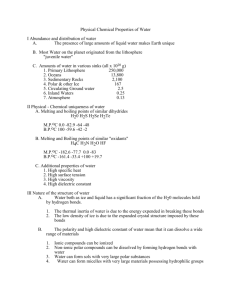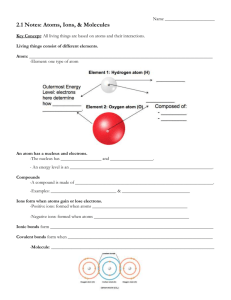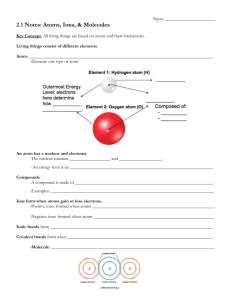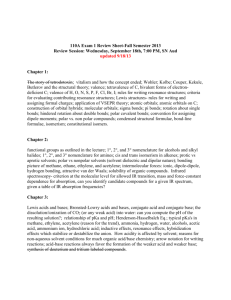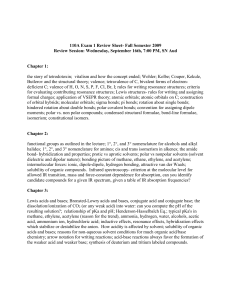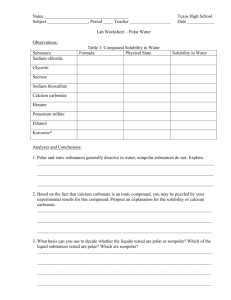CHAPTER 1 ORGANIC COMPOUNDS
advertisement
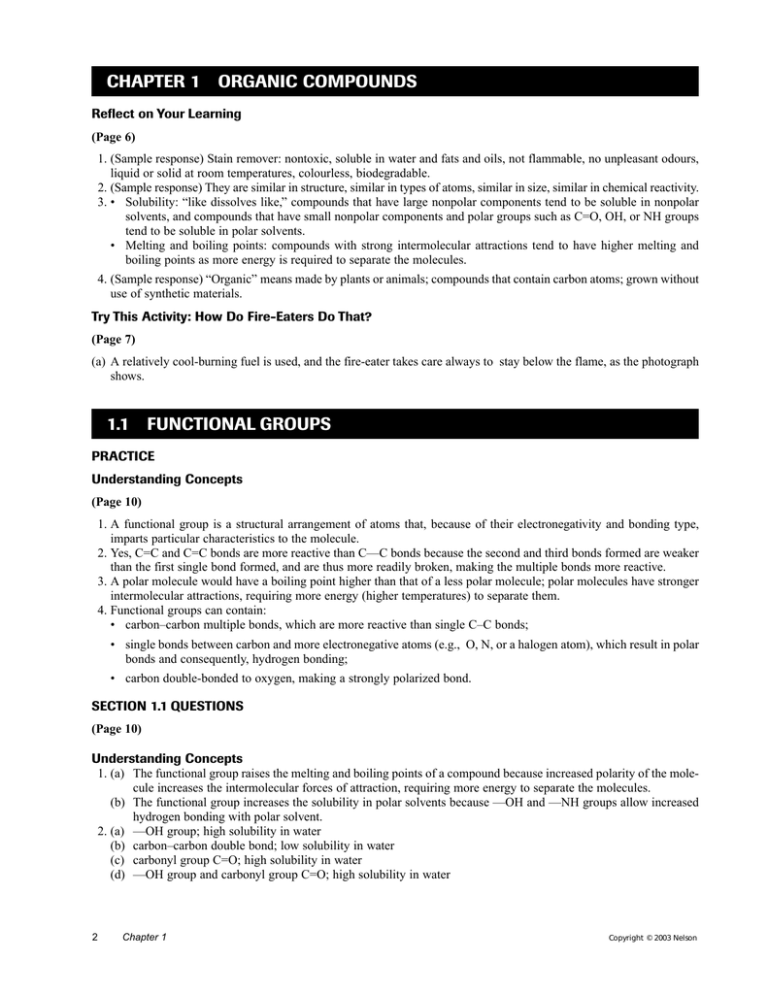
CHAPTER 1 ORGANIC COMPOUNDS Reflect on Your Learning (Page 6) 1. (Sample response) Stain remover: nontoxic, soluble in water and fats and oils, not flammable, no unpleasant odours, liquid or solid at room temperatures, colourless, biodegradable. 2. (Sample response) They are similar in structure, similar in types of atoms, similar in size, similar in chemical reactivity. 3. • Solubility: “like dissolves like,” compounds that have large nonpolar components tend to be soluble in nonpolar solvents, and compounds that have small nonpolar components and polar groups such as C=O, OH, or NH groups tend to be soluble in polar solvents. • Melting and boiling points: compounds with strong intermolecular attractions tend to have higher melting and boiling points as more energy is required to separate the molecules. 4. (Sample response) “Organic” means made by plants or animals; compounds that contain carbon atoms; grown without use of synthetic materials. Try This Activity: How Do Fire-Eaters Do That? (Page 7) (a) A relatively cool-burning fuel is used, and the fire-eater takes care always to stay below the flame, as the photograph shows. 1.1 FUNCTIONAL GROUPS PRACTICE Understanding Concepts (Page 10) 1. A functional group is a structural arrangement of atoms that, because of their electronegativity and bonding type, imparts particular characteristics to the molecule. 2. Yes, C=C and C=C bonds are more reactive than C—C bonds because the second and third bonds formed are weaker than the first single bond formed, and are thus more readily broken, making the multiple bonds more reactive. 3. A polar molecule would have a boiling point higher than that of a less polar molecule; polar molecules have stronger intermolecular attractions, requiring more energy (higher temperatures) to separate them. 4. Functional groups can contain: • carbon–carbon multiple bonds, which are more reactive than single C–C bonds; • single bonds between carbon and more electronegative atoms (e.g., O, N, or a halogen atom), which result in polar bonds and consequently, hydrogen bonding; • carbon double-bonded to oxygen, making a strongly polarized bond. SECTION 1.1 QUESTIONS (Page 10) Understanding Concepts 1. (a) The functional group raises the melting and boiling points of a compound because increased polarity of the molecule increases the intermolecular forces of attraction, requiring more energy to separate the molecules. (b) The functional group increases the solubility in polar solvents because —OH and —NH groups allow increased hydrogen bonding with polar solvent. 2. (a) —OH group; high solubility in water (b) carbon–carbon double bond; low solubility in water (c) carbonyl group C=O; high solubility in water (d) —OH group and carbonyl group C=O; high solubility in water 2 Chapter 1 Copyright © 2003 Nelson
